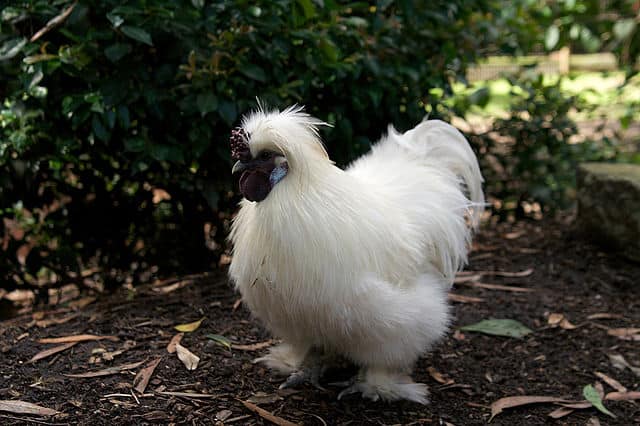Chickens
Silkie Chickens and Some Facts About Them
Among all chicken breeds, Silkie chickens are the most popular and most interesting to watch. But do you know why? Basically, these chickens are exactly as they look – cuddly, sweet, adorable,and funny. At first look, rest assured you’ll immediately fall in love with them. However, they tend to wander a lot into other people’s lawn, making it quite difficult to look after them.
Other than these, are there other things we need to know about them? Let’s dig deeper into each aspect of the Silkie chicken breed for us to know them better.
History
This breed is said to have originated in China. But until now, the exact date is still unknown. With its interesting features, it slowly became very popular, making its way to Europe through traders and merchants navigating and passing through the Silk Route.
The earliest recorded account about Silkie chickens is dated back in the 13th century. Marco Polo wrote about his travels in Asia, and he mentioned a furry chicken. Researchers suggest he was referring to the Silkies.
Physical Appearance
Although it is commonly mistaken as a bantam breed, Silkie chickens actually vary in terms of size according to region. In North America, these fowls are bantam-sized. On the other hand, in Europe, they are relatively tiny chickens.
Silkies have two unique varieties – the bearded and non-bearded. Bearded Silkies have an additional group of feathers under their beak, which covers their earlobes. The non-bearded have large wattles that are about 25 to 40 mm in length below the beak.
The usual weight of a male Silkie is 4 pounds, while a female averages 3 pounds. With that being said, it is quite evident why this breed is considered smaller in size and weight.
Silkie chickens may also be sorted based on color. But among all, black, buff, blue, gray, white, and partridge are the only accepted hues. Nonetheless, there are also other varieties with red, splash, lavender, and cuckoo colors.
Here is something interesting about this chicken. It is born as a polydactyl. This means it has five toes per foot, which is completely different from typical chickens that only have four.
Temperament
Unlike any other animals, Silkie chickens are docile and compliant. Though they may look very delicate, they are still reasonably healthy. And because they can be easily tamed, it’s no wonder why they are considered an ideal choice for families with children.
Grooming and Maintenance
Compared to other fowl breeds, Silkies don’t really require much care. However, frequent trimming of the nails is highly-recommended so as to prevent them from hurting themselves.
If you are raising these chickens, then expect to exert extra effort. You need to spare a considerable amount of time for washing and grooming. Still, you can use some tips and tricks to groom them easily.
In the event that you want to attend to their needs personally, you need to wash them in three different solutions before towel drying. After that, you need to brush their feet with tooth brush and rub baby oil into their skin for polishing.
Lifespan and Health
When the temperature becomes warm, these birds become prone to lice infestation, particularly the broody hens or those that sit on eggs. To avoid this, they need to be checked regularly, at least once a month during the warmer months, for any signs of lice.
Sometimes, they are also vulnerable to mites. These parasites burrow under the skin, causing them to have scaly legs. When this happens, it is best that you offer them the best and appropriate worming products.
The average lifespan of a Silkie is 8 to 9 years.
Diet
Since it is a relatively small fowl, pelleted foods aren’t really considered ideal foods, especially for chicks. Depending on their age, they must be fed on chick grower or chick starter as it can be simply digested and can be purchased directly at your nearest pet shop.
If you think that a commercial pet food doesn’t offer any perks, then you can feed them grass, lettuce, or cabbage. You can even give them food scraps and hot porridge.
Apart from food, Silkies need to have access to clean and fresh water all the time. In a day, a Silkie can consume up to half a litre of water, so be sure that their containers are always filled.
Common Issues
Because they are very gentle and trusting by nature, Silkies are often bullied by other bird breeds. In fact, if you are going to place them inside chicken enclosures with others, there are possibilities that they fight each other. So you might have to keep an eye on them to make sure everything’ll be alright.
Since their feathers are more or less similar with fur, they really don’t do well in a wet climate.
All these characteristics and traits are common across the breed. But then gain, not every chicken will adapt to them. So before you decide to buy Silkie chickens or adopt them, make sure you know their physical traits and characteristics to avoid disappointments in the end.
Image Sources: [1] [2] [3] [4] [5] [6] [7]




I find information in this blog very useful.I’m a chicken farmer and I would like to introduce Silkie chicken in my homestead.It’s quite tricky when you want to introduce something new,you have to do a lot of research.This blog has summarized all the information.Good read.